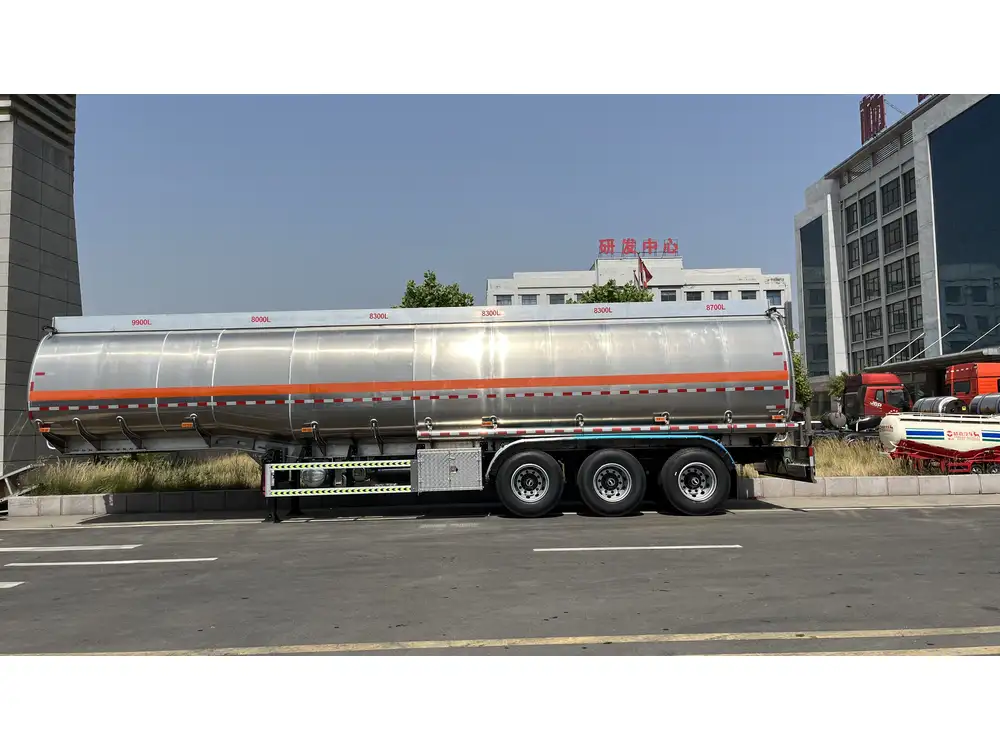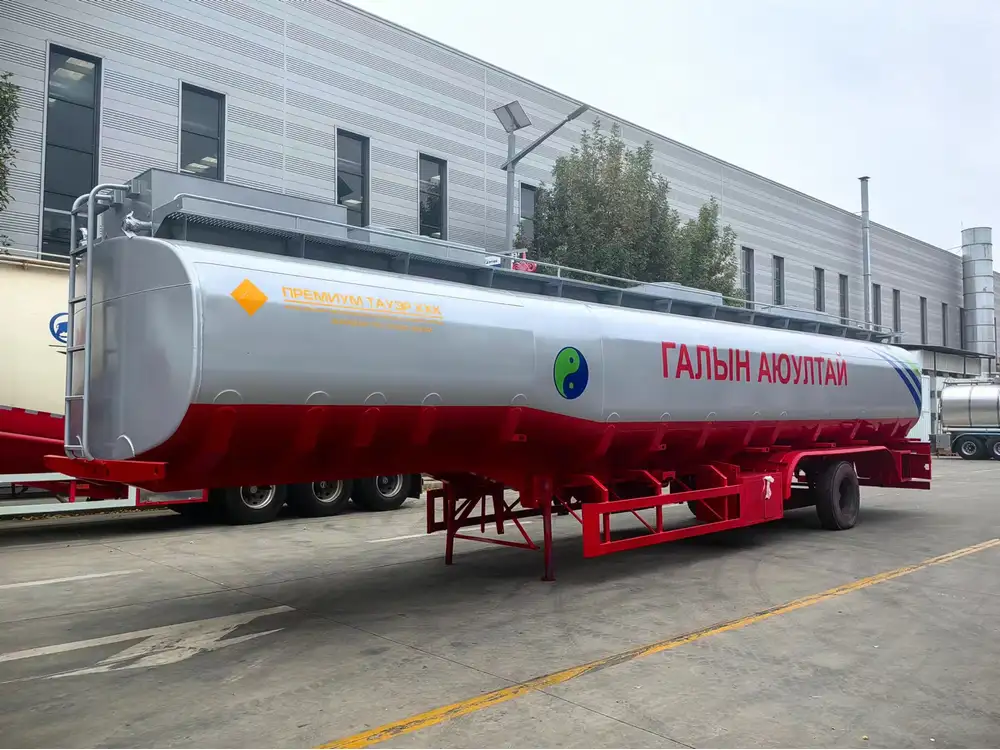In an ever-evolving marketplace where logistics and distribution are paramount, the petrol tanker industry in Somalia presents an intriguing opportunity for investment and economic growth. With a myriad of options available, understanding the intricacies of petrol tanker costs and their operational capacity is essential for prospective buyers. In this article, we explore the various factors influencing petrol tanker costs for sale in Somalia, alongside insights that can pave the way for informed decisions and investments.
Understanding the Cost Structure of Petrol Tankers
When assessing the cost of petrol tankers, several components must be considered. Without these nuances, one may find the investment daunting or, conversely, too simplistic. The cost can be broken down as follows:
| Cost Component | Description |
|---|---|
| Purchase Price | Base cost of the tanker vehicle |
| Customization and Features | Add-ons like pumps, containers, and safety features |
| Maintenance Costs | Ongoing costs related to upkeep and repairs |
| Fuel Efficiency | Operational expenditure influenced by fuel consumption |
| Regulatory Compliance Costs | Ensuring adherence to local laws and transportation regulations |
From the table, it is evident that the purchase price is merely the starting point. Buyers often overlook recurring costs, which can accumulate significantly over time.
Purchase Price
The initial ticket value for petrol tankers in Somalia can vary dramatically based on several variables:
- Tank Capacity: Larger tankers with higher capacities tend to be more expensive. For instance, a 10,000-liter tanker will carry more fuel than a 5,000-liter variant, impacting the base cost.
- Type of Tanker: The design and intended use—whether for domestic use, commercial distribution, or export—will significantly alter prices.
- Condition: New versus used tankers present different pricing tiers. A well-maintained used tanker may offer cost-effectiveness, but thorough inspection is advised.

Customization and Features
Investing in specialized features can drive cost upwards but may be beneficial in the long run. Some of the options include:
- Reinforced Tanking Material: Durable, high-grade materials can extend lifespan but at a higher initial cost.
- Safety Mechanisms: Compliance with safety standards may necessitate additional expenses in firefighting equipment, spill containment features, and pressure relief systems.
- Technology Integration: Modern tankers often come equipped with GPS tracking and fuel monitoring systems.
Aligning customization with operational goals is crucial to maximizing the return on investment.
Maintenance Costs
Long-term maintenance is an often overlooked yet critical component of the total cost equation. Regular servicing, parts replacement, and compliance checks contribute to an operational budget that should not be ignored. Anticipated maintenance activities include:
- Routine Inspections: A thorough examination of the tank, axle, and brakes to ensure safety.
- Parts Replacement: Budgeting for the replacement of aging components, notably rubber seals and fuel delivery systems.
- Expert Services: Employing trained professionals for complex maintenance tasks to ensure adherence to safety standards.
Fuel Efficiency
Fuel consumption directly affects profitability. A more fuel-efficient tanker may have a higher upfront cost but could save money over time through lower fuel expenditures. Investing in technologies such as:
- Aerodynamic Designs: To minimize drag on the road.
- Engine Efficiency: Combustion systems that maximize fuel use.
These can yield significant savings, emphasizing the need to factor in fuel efficiency when evaluating petrol tanker costs.

Regulatory Compliance Costs
Somalia’s regulatory landscape necessitates compliance with various local and national transport laws. Non-compliance can result in fines and operational halts, thus impacting the total cost of ownership. Components of regulatory compliance include:
- Licensing and Permits: Fees associated with obtaining necessary transport licenses.
- Inspection Fees: Costs for mandatory inspections governed by national safety standards.
- Insurance: Comprehensive coverage to protect against liabilities.
Understanding the regulatory environment is fundamental to achieving cost-effectiveness in tanker operations.
Why Invest in Petrol Tankers in Somalia?
Growing Fuel Demand
The demand for petroleum products in Somalia has surged, driven by economic recovery and development projects. As businesses and communities expand, suppliers need additional tankers to meet this rising demand.

Strategic Location
Somalia’s unique geographic positioning makes it an affluent hub for petroleum transportation in the Horn of Africa. Investing in petrol tankers allows for direct access to key markets, enhancing logistical efficiency.
Economic Incentives
The Somali government has introduced various incentives aimed at invigorating the transport sector. Tax deductions and grants for new entrants into the market lower the barrier to entry, making now a pertinent time to invest.
Financing Your Petrol Tanker Acquisition
Acquiring a petrol tanker often necessitates substantial capital investment. Here are financing options to consider:
- Direct Purchase: Utilizing savings or company funds for a one-time payment.
- Leasing Arrangements: Reducing initial capital outlay and spreading costs over time.
- Bank Loans: Traditional financing through local or international banks that cater to capital expenditure in transport.

Assessing Financial Viability
Conducting a thorough cost-benefit analysis before proceeding with acquisition can aid in understanding potential returns against the invested capital. Feasibility studies can aid prospective buyers in evaluating:
- Market Demand: Ensuring that sufficient demand exists for fuel products in the targeted region.
- Break-even Analysis: Estimating how soon the investment will return profits.
Where to Buy Petrol Tankers in Somalia
Finding a reputable dealership or manufacturer is pivotal. Here are some considerations when searching for petrol tankers for sale:
- Local Dealerships: Many regional dealers specialize in semi-trailers, thus providing localized support.
- Direct Manufacturers: Companies like CarMax Vehicle are renowned for their quality products and customization options. Choosing a manufacturer means buyers can tailor specifications to suit their unique operational needs.
- Online Platforms: There are various online marketplaces where petrol tankers are listed for sale. While this provides a broad selection, due diligence is necessary.
Comparison of Manufacturers
| Manufacturer | Specialization | Notable Features |
|---|---|---|
| CarMax Vehicle | Custom Semi-trailers and Tankers | High durability, versatile capabilities |
| Others | Generic tankers | Variable quality, limited specifications |

Conclusion
In navigating the complex landscape of petrol tanker costs for sale in Somalia, we have dissected pivotal factors that can help potential buyers make astute investments. Understanding all aspects from purchase price, customization, maintenance, and compliance will equip investors with the insights necessary to thrive in the burgeoning Somali fuel market. With a combination of strategic planning, financial prudence, and relationship with suppliers like CarMax Vehicle, investment in petrol tankers can pave the way for significant returns and growth in an expanding economy.
FAQs
What is the average cost of a petrol tanker in Somalia?
The average cost varies significantly based on capacity and features, typically ranging from $30,000 to $150,000.
Are used petrol tankers a viable investment?
Yes, provided they are well-maintained, used petrol tankers can offer substantial savings compared to new models.
What is the typical lifespan of a petrol tanker?
With proper maintenance, petrol tankers can last between 10 to 15 years, depending on usage.
How do I ensure compliance with local regulations?
Consult with local transport authorities or hire experts familiar with Somali transport laws to navigate compliance effectively.











Reviews
There are no reviews yet.